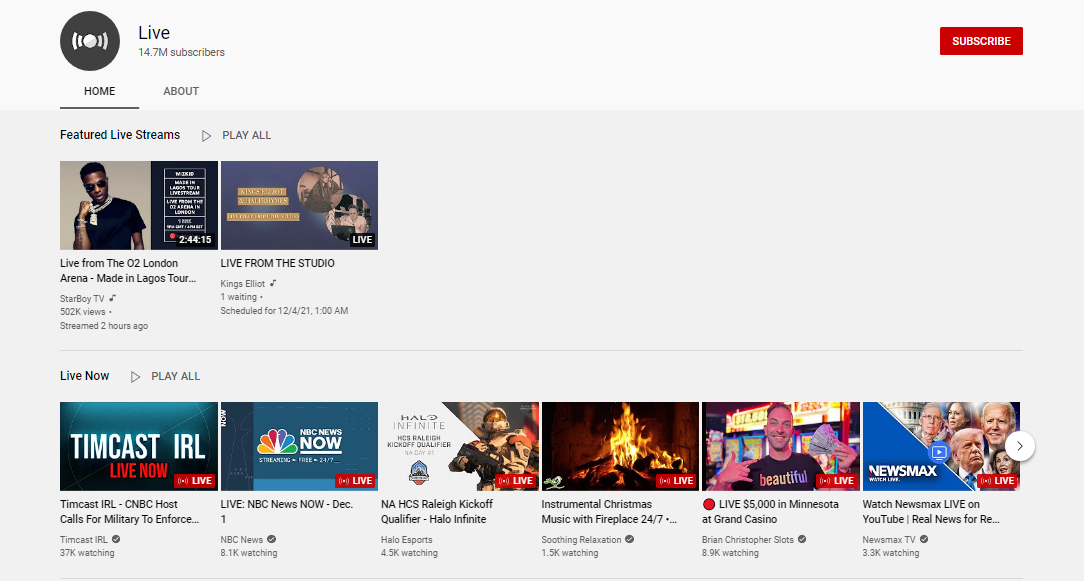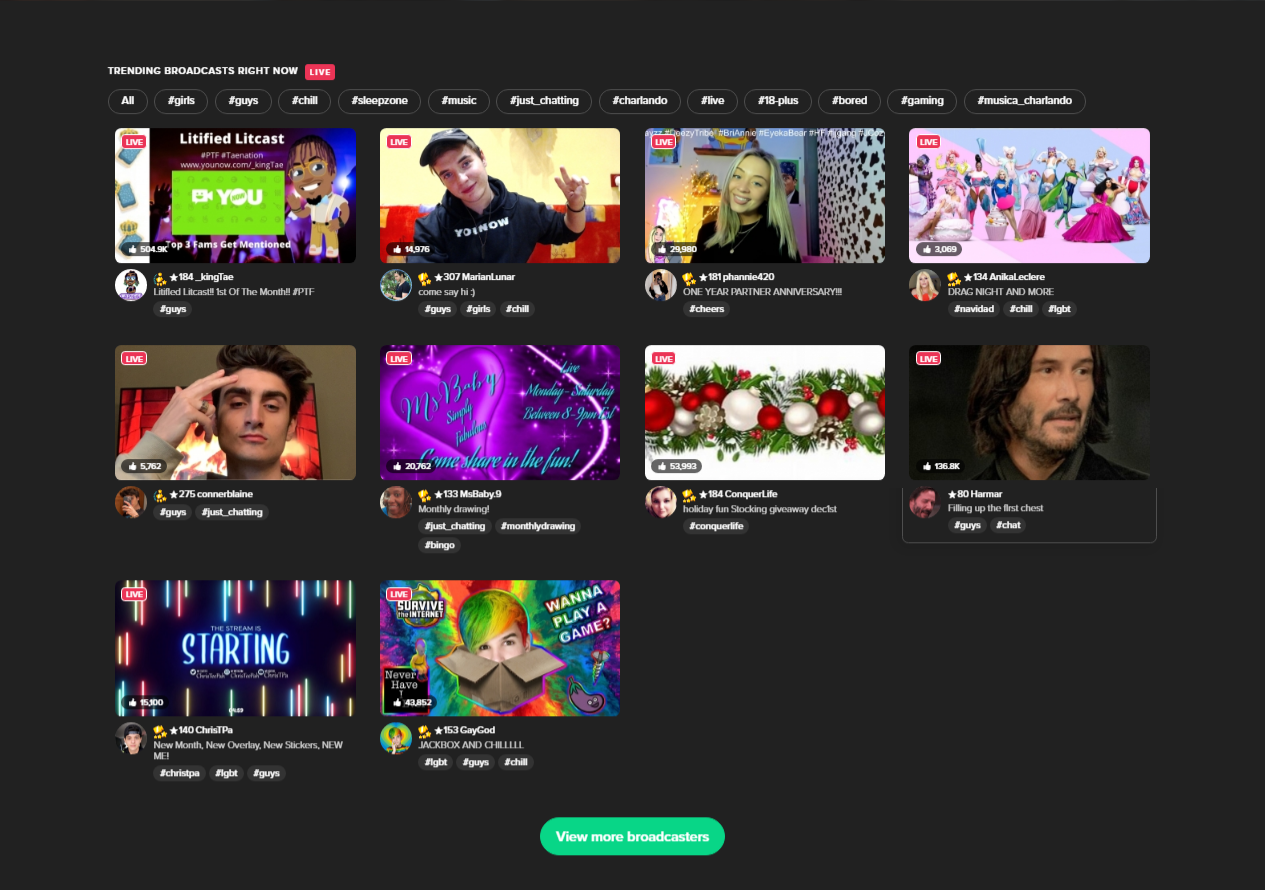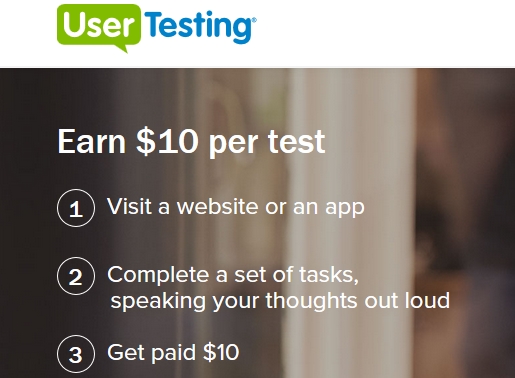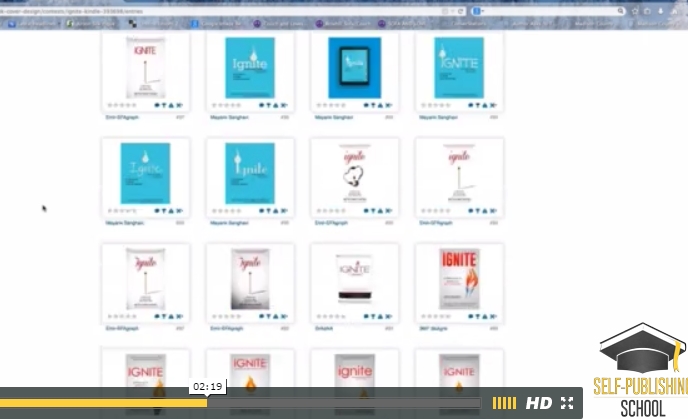Live streaming is wildly popular nowadays. You might have even watched a live stream or two today!
New technology and faster internet connections are allowing people to easily stream their lives, their thoughts, and even the video games they’re playing right from their computers and mobile devices.
But did you know that you can earn some side cash by simply broadcasting your daily life and your opinions?
In today’s blog post, you’ll learn how to make money live streaming: how live streaming works, where to live stream, and how to earn from it.
What is Live Streaming?
First, what exactly is live streaming?
Live streaming is the broadcasting of live video over the internet to an individual or to an audience.
In a nutshell, it’s just you, on camera, talking to the world. Think PBS on the go, with limited start-up costs!
Unlike pre-recorded videos that can be edited, from which scenes can be added or cut, or filters can be applied, live streaming is real-time, uncensored, and often unscripted.
You can stream from your phone, tablet, or laptop from a broadcasting platform. You can be as raw or as polished as you want.
What Can You Live Stream?
You can stream your everyday life, your random thoughts, and your virtual and actual interactions with people in your life.
You can show the world your singing, dancing, and even your jokes.
Show your audience the sports game you’re watching, along with your running commentary.
If you have opinions on politics, religion, or any other controversial subject, you can stream that too.
Love cooking? Stream it!
Love playing video games? There’s a huge audience who just love watching other people play!
Bottom line: Pretty much anything you want!
The possibilities are almost endless, and it leaves a lot of room for anyone to take advantage of the boom and make money from live streaming.
Live Stream Platforms
There are numerous sites and apps available that can help you to live stream instantly.
When choosing one, always keep in mind how simple it is for you to use, how easy it is for your audience to engage with you, and how straightforward it would be to monetize your live streams.
Here are some of the live stream platforms you can choose from.
1. YouTube Live
The granddaddy of online video, YouTube now offers its own live streaming platform, YouTube Live, to secure its video dominance.
Being on YouTube Live allows you to broadcast your live streams, record these live streams, and allow audiences these recorded live streams as searchable, on-demand videos, all on the same platform.
YouTube’s incredibly large audience is also a considerable advantage. Your viewers are already familiar with YouTube, and placing your videos in an already-popular platform increases the chances of attracting new fans of your live stream.
2. Facebook Live
If you already have a following on Facebook, simply going on Facebook Live is a good way to broadcast your live stream right on your followers’ News Feed.
Simply go to your Facebook app on your mobile, tap the Live button on your post composer, and you’re good to go.
3. Instagram Live
Another social media platform that provides users the ability to live stream is Instagram.
You can share a live video on Instagram and connect with your Instagram followers for an hour.
Once that hour is over, you can share a replay of your live video on your Instagram stories.
The usual people on Instagram Live are celebrities and high-profile influencers.
4. Twitter Live
Yet another social media platform that has moved into the live streaming space is Twitter.
Twitter Live is usually for breaking news, but if you have enough interested Twitter followers, live streaming on Twitter can be lucrative for you.
5. YouNow
YouNow is also a mobile app for both iOS and Android that’s mostly used by a younger crowd.
A few years ago, YouNow was one of the most popular live streaming platforms, but recently, a part of its audience share has been taken by Twitch.
6. Twitch
Known particularly for streaming video games and e-sports being played by popular gamers, Twitch has a huge user base and is, therefore, one of the most popular platforms around.
If you’re a gamer, it’s unlikely you’ll need any other live streaming platform.
7. TikTok Live
TikTok was the breakout star of social media in 2020, and with more than 800 million active users, it remains a force to be reckoned with in 2021.
LIVE on TikTok is a feature that allows creators to engage with their audience in real-time.
It also allows creators above 18, with more than 1,000 followers, and with more than 100,000 video views within the last 30 days the chance to be sent virtual gifts (that can be exchanged for actual cash) from their biggest TikTok fans.
8. LinkedIn Live
You may not think that you’ll have any use for your LinkedIn account aside from applying to jobs and maybe networking with colleagues in your industry.
But if your target audience comprises millennial working professionals and older users (read: more spending power), or you want to be noticed by brands, LinkedIn Live Video might just be the key to your success.
To get started, you’ll need to apply to have the feature added to your profile. Both personal and business pages can apply. Once approved, you can get started.
However, one inconvenience in using LinkedIn Live is that they currently don’t offer native streaming; you’ll have to sign up for a third-party streaming tool, like StreamYard or Restream, which is an added expense.
Also, you might not even get approved; LinkedIn has a certain set of criteria.
9. Amazon Live
If you (or, fine, your parents) have ever shopped through QVC, you’d know that there’s nothing like product demos done live, sometimes with audience participation, and time-bound offers (“call now and get a free gift” or “call now and get 80% off”) to compel a captive audience to open their wallets and buy that thing now.
And this experience is just what Amazon is trying to offer their customers through Amazon Live.
You’ll need to be an Amazon Influencer to be able to live stream. When you feature products on your live stream, you earn commissions from qualified purchases made through the product carousel that will appear below your live stream.
You can demonstrate the products to your audience and show them in real time why you love that product and why you’re recommending it to them.
Plus, you can also do a live promotion, such as discounts that will only apply if your viewers Checkout the products you’re featuring from their Carts while the live stream is active.
Making Money from Live Streaming
Now that we know what live stream platforms are out there, the next thing is to learn how to monetize your live streams.
There are several ways to earn money from live streaming, but bear in mind that not all of these revenue streams will work with all platforms.
Also, to truly make decent money, you will need to make use of several revenue streams (ain’t that always the way!).
Here are some of the ways that you can make money from live streaming.
1. Ads
Joining the right live streaming platform with the right advertising network allows you to earn a commission for each view or click, depending on how the advertising network sets its metrics.
Like with any advertising network, the earnings per view/click are usually pennies, but with a large enough audience you can easily pull in $1,000 or more a month purely from ads.
YouTube Live and Facebook Live are capable of showing ads during live streams.
The problem is that ads can be annoying, and so viewers can install ad-blocking software, which reduces your commissions.
So if this is your sole source of revenue from live streaming, you’ll want to rethink your strategy and get another source.
2. Donations/Tips
That first tip you’ll ever receive from your fans is something special.
It’s validation for your live streaming endeavor that someone appreciated your material enough to send you something, even if it’s just a couple of bucks.
Most people think that donations and tips aren’t going to earn you much money, and they’re right.
However, having it as a side revenue stream can help you at least earn some change for coffee.
In addition, most major live streaming platforms allow you to receive donations and tips, either from their own integrated services or currencies or by allowing you to advertise your accounts with third-party services, such as PayPal or Venmo.
For instance, YouTube’s main tip tools are Super Chat and Super Stickers, which YouTube viewers can buy to highlight their messages to you during your live stream. Twitch, on the other hand, allows viewers to buy Bits and use them to Cheer for you. You get a cent for each Cheer you get from your viewers.
3. Subscriptions
How can getting tips from your fans get better?
Why, by getting them regularly, of course.
If your fans can pay a set amount every month, no matter how small, this gets you closer to earning a sure, steady income, while being able to give them more of what they want and some exclusive content in return.
Most of the above live streaming platforms support subscription plans and allow viewers to subscribe to a live stream right on the platform.
For instance, Facebook, YouTube, and Twitch have channel or page membership programs allowing viewers to have a weekly or monthly payment to creators on these platforms in exchange for exclusive content and perks for subscribers.
However, to be eligible to incorporate this feature on your live stream, your account needs to meet certain requirements.
If your account isn’t eligible for a subscription program, or the platform you’re using doesn’t have one, consider using third-party providers to allow viewers to make regular weekly or monthly payments to you in exchange for your content.
Patreon allows people to sponsor you on a weekly or monthly basis and in return for providing them with something: such as regular live streaming and exclusive access and perks.
4. Brand Partnerships and Sponsorships
When you’ve made a name for yourself, you can start reaching out to brands and propose partnerships with them. They can sponsor one or more of your live streams in exchange for featuring their products or services, either by displaying them as a banner or on your background, mentioning them to your viewers, or actually using and reviewing them on your live stream.
To build a successful partnership, you’ll need to be intimately familiar with your audience. You need to know their ages, genders, interests, and problems they need solutions for.
At the same time, you need to be a genuine fan of the brand you want to partner with and feel comfortable enough to promote their products and services to your audience. Remember, your viewers trust you, and if you break that trust, they won’t be back to watch any of your content.
5. Affiliate Programs
Memberships to affiliate programs enable you to share affiliate links, promo codes, or coupon codes to your viewers so that when they purchase something from your affiliate.
The way this usually works is that you post the affiliate link or code somewhere on the stream description.
An important thing to remember is that not all live stream platforms allow affiliate marketing on live stream videos that they host, so be very careful to read up on their terms and conditions.
Also, make sure to recommend products and services that are relevant to your content, and not create content solely to promote. The quality of your videos should always go before making money from live streaming.
6. Live Selling
Live selling is a practice where sellers show viewers, fans, and potential customers their products, demonstrate how these work and how much they cost, and other details.
During a live selling session, viewers can place an order through links shown during the live stream session.
And yes, as I’ve said, QVC and HSN are the forerunners of this type of selling. Though they often weren’t really broadcasting live; their shows were often taped. But viewers can still call in to order the products they want with the promotions that are advertised during the time of airing the episode.
What makes today’s live selling a step up from the live selling of old is that today’s live selling sessions are much more interactive, with sellers being able to answer viewers’ questions about the products in real time and being able to see which products are selling out.
Plus, the engagement isn’t just limited to seller-viewer. Everyone watching can see and interact with each other as well, which fosters a sense of community and competition at the same time, because they’re up against each other for the products being sold.
With the 2020 pandemic descending on the world and everyone staying at home, potential customers are more comfortable than ever with doing everything online, even buying online with a few taps.
As I’ve mentioned above, Amazon Live is currently giving Amazon Influencers the ability to sell products through live streaming.
Facebook and Instagram have also launched Live Shopping on their respective platforms.
Live selling is already popular in China, but still relatively rare in the US and other western countries. Getting in on the action now means you can get ahead of the pack.
7. Your Own Products or Services
Instead of, or in addition to promoting other companies’ products, why not try your hand at selling your own products?
Selling your “merch,” as it’s often called, is common enough that live stream platforms offer plenty of advice and tools to help live streamers boost their sales.
The most important aspects of selling your merch are still up to you: concept, design, production, and shipping for physical goods, or hosting and delivery for digital products.
Make sure that the products you’re selling are related to your live stream content, especially if you have a particular theme.
For instance, if you have been doing workout-themed live streams, and your viewers are really digging the different exercises you’re doing, you can sell merch like activewear and exercise equipment, or digital goods like an ebook on fitness or an entire workout program with instructional videos, cookbooks, and food and exercise charts.
8. Mentoring
Maybe doing an entire video course is too overwhelming for you, or you might think you’re not “academic” enough or knowledgeable enough to be an online instructor or lecturer.
But if you are able to give valuable advice, tips, and guidelines about a certain topic, you might want to be somebody’s mentor.
The idea is to offer your viewers one-on-one time with you (for a fee) so you can help them achieve specific goals.
Your success here is largely dependent on the quality of your mentorship and how dedicated you are to helping your viewers solve their problems.
9. Pay-per-view content
Media companies and influencers making content available through pay-per-view is another trend that became popular during the 2020 global pandemic.
And pay-per-view live streaming is the next level.
Gaming-related live streams remains the most popular type of content, but nowadays, people with different hobbies and interests look for content that appeals to them.
But to truly be successful in making money through offering pay-per-view live streams, you need to be able to offer something premium that makes it stand out from thousands of other free content such that viewers are willing to pay for your content.
There are virtual ticketing services that allow you to sell admission to your live stream, such as Ticketleap or TicketSpice. They handle the ticket sales and sending the URL for the live stream to those with confirmed payment, and they get either a flat fee or percentage of the ticket sales in return.
Do You Need Your Own Website?
Using any one of these live streaming services is great, but it’s very likely that you’ll eventually need to have your own website to make the most out of your live streams.
Having your own website is like having your own home base where you can direct your audience to know more about you and what you’re all about.
You can host replays of your live streams here, as well as additional resources that are useful for your viewers, such as blog posts, images, videos, or any other media that complement your live stream content.
You can also promote your own products there, too, without fear of treading on any terms and conditions or having to sound like an annoying salesman in your streams.
Another thing you can implement on your own website is a membership system. Users pay to gain access to exclusive member-only content, one-on-one sessions, badges and trophies, a community discussion area, and so on.
Bottom line? I highly recommend building your own website.
Downsides of Live Streaming for Money
The main hurdle in making money from live streaming is building a fan base. Several live stream platforms require you to have a substantial number of followers and content views to even be considered for their live streaming service, let alone allow you to earn from ads and other monetization avenues.
Of course, if you’re a lady you will likely get a larger following sooner, but with the added disadvantage of having to handle more, ahem, “difficult” followers.
Aside from these, you’ll need to make sure you stream consistently, as people prefer knowing when to expect your live stream. Depending on your niche, you may stream for an hour a day, or end up streaming for 10 hours every day (very common with gamers who stream).
Another downside to consider is that nothing dies on the Internet. This may sound good; that is, until you make your first mistake.
Because live streams tend to be spontaneous, it’s only a matter of time before you make a blunder live. It can range from simply mispronouncing words to Freudian slips, from wardrobe mishaps to highly offensive remarks.
Worse, there’s nothing to stop viewers from taking screenshots or recording snippets or even entire sessions of your live stream, which can then become viral.
Mistakes are inevitable, but just remember to sincerely apologize and learn from them.
Final Thoughts on Live Streaming
There’s no quick and easy way to make money with live streaming, as you need to build up a user base. That being said, there’s a great potential for making thousands a month via live streaming, especially if you make sure you have more than one revenue stream.
While the initial costs of this marketing angle are low (a smartphone and an internet connection), the time cost can mount up quite quickly.
Other ways to make money from videos
If making or watching videos is your jam, and you’re wondering if you can ever turn that into a paying gig, the following articles from our site may help:
Get Paid to Do ASMR Videos: How to Turn Sounds into Cash
Get Paid to Watch Movies
Get Paid to Watch TV
Have you ever broadcast live from any of the above platforms? Did you manage to make any money from live streaming? Let me know in the comments!









